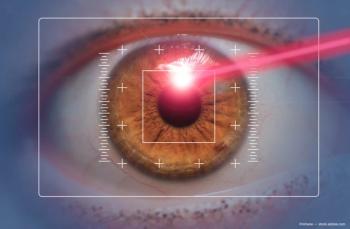
No AMD progression following cataract extraction, study finds
Cataract surgery does not seem to accelerate progression to neovascular age-related macular degeneration (AMD) in those patients who are at low-to-moderate risk for progression, reported Frederick Ferris III, MD, Friday during the retina subspecialty day at the American Academy of Ophthalmology meeting.
Chicago-Cataract surgery does not seem to accelerate progression to neovascular age-related macular degeneration (AMD) in those patients who are at low-to-moderate risk for progression, reported Frederick Ferris III, MD, Friday during the retina subspecialty day at the American Academy of Ophthalmology meeting.
This study was prompted by the results of the Beaver Dam Eye Study and the Blue Mountain Eye Study, both of which showed that there was about a 5% increased risk of neovascularization in aphakic patients who were followed for 5 years; the Baltimore Eye Survey and the Proyecto VER similarly showed a increase of about two times, according to Dr. Ferris, director of the Division of Epidemiology and Clinical Research, National Eye, National Institutes of Health, Bethesda, MD.
Dr. Ferris and colleagues in the Age-Related Eye Disease Study Research Group assessed the effects of cataract surgery every 6 months in these patients using four statistical approaches to determine if there was an association between surgery and development of AMD: a Cox proportional hazards model using cataract surgery as a time-dependent covariate; repeated measures regression analysis; ordinary logistic regression analysis; and a matched case/control approach.
After a median follow-up of more than 6 years, all of these methods indicated that cataract surgery was not associated with progression to neovascular AMD.
“In all the analyses, the relative risks were approximately 1.0, indicating that there is little or no association of cataract extraction with the development of neovascular AMD. Generally, we think that patients who need cataract surgery should not be unnecessarily worried that they are going to increase their risk of AMD,” Dr. Ferris stated.
Newsletter
Don’t miss out—get Ophthalmology Times updates on the latest clinical advancements and expert interviews, straight to your inbox.
















































.png)


